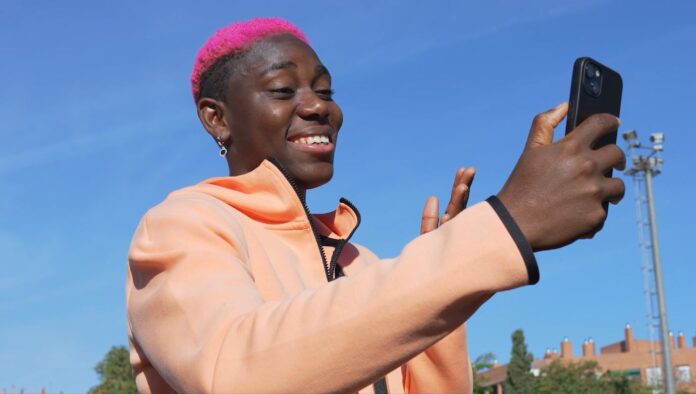What do Qualcomm’s 4s Gen 2, footballer Asisat Oshoala and the usage gap have in common?
It’s been a busy few weeks for me, but two particular things stand out that I’d like to (try to) link together. First, at Mobile World Congress Las Vegas I had the opportunity to meet with legendary footballer Asisat Oshoala and GSMA Chief Marketing Officer Lara Dewar to discuss the usage gap that impacts people all over the world, but especially impacts people in emerging markets. Second, on Oct. 8, I moderated a webinar with Qualcomm executives that was focused on enhancing the accessibility and impact of 5G in emerging markets, something they’re addressing with the Snapdragon 4s Gen 2 mobile platform.
The social and economic benefits derived from helping bridge the digital divide and connect the unconnected are crystal clear and well-acknowledged across government and industry. But the usage gap is lower-hanging fruit. This is when people could be connected because the network is there, but they aren’t for a number of seemingly solvable reasons.
Based on research from the GSMA, around 3 billion people—38% of the population—live in an area covered by mobile broadband but don’t use it. Some of the primary barriers to access include online safety, lack of relevant content and services, digital literacy and skills, and affordability of devices.
Oshoala plays or Bay FC in San Francisco, and for Nigeria’s women’s national team; she’s a veteran of Arsenal and Liverpool in England, Dlian in China and a professional club in Nigeria. Oshoala is also the founder of a foundation that helps marginalized young women with digital literacy, and she’s an ambassador for GSMA’s Breaking Barriers campaign. She gave a keynote during the Las Vegas show and told audience members mobile technology emboldens the work of her foundation. Speaking of the individuals her foundation supports, Oshoala said, “They can build things on their own now…They already know that there’s more to having a phone than going onto social media and having fun.”
Discussing those barriers to the usage gap, Dewar focused on handset affordability. She said there are opportunities to address the issue both through industry collaboration and various funding mechanisms. “We are partnering with some very progressive companies who are looking to help us attack and address that.”
Specifically, GSMA has established the Handset Affordability Coalition alongside a group of mobile operators, device ecosystem stakeholders and OEMs, financial institutions and international organizations like WEF’s Edison Alliance and the United Nations’ International Telecommunication Union.
Back to the webinar I referenced: the focus was on the specifics of Qualcomm’s Snapdragon 4s Gen 2 mobile platform, but also on the broader context of what a 5G Standalone (SA)-capable device around a $100 price point could mean for users, or non-users, in emerging markets like India. Part of that discussion, available on-demand here, looked at a Qualcomm strap line I’ve liked since I first saw a few years ago on a banner outside the Mobile World Congress Barcelona venue. “Engineering human progress,” it read.
Qualcomm SVP and GM of Mobile Handsets Chris Patrick explained it this way: “Technology is what we do…Our mission is developing critical technology then get it to as many people as possible.” Whether it’s education, financial services, healthcare or another application, “We couldn’t live the lives we live today” without connectivity, he said. “We see, across the globe, it has the potential to really transform economies and industries.”
The technical details of how Qualcomm is able to work with its partners to deliver an affordable, performant handset are quite interesting, and potentially suggest a long tail of hardware simplification. But by putting quality communications (Anyone? Anyone? Bueller?) technology into the hands of more people, we get closer to meeting GSMA’s goal, Oshoala’s goal, Qualcomm’s goal, and a lot of other groups’ goals with regard to the usage gap. And that’s what “engineering human progress” looks like. And the fact that a variety of stakeholders are looking at the same problem from different, but complementary angles, means that low-hanging fruit is getting riper by the day.

